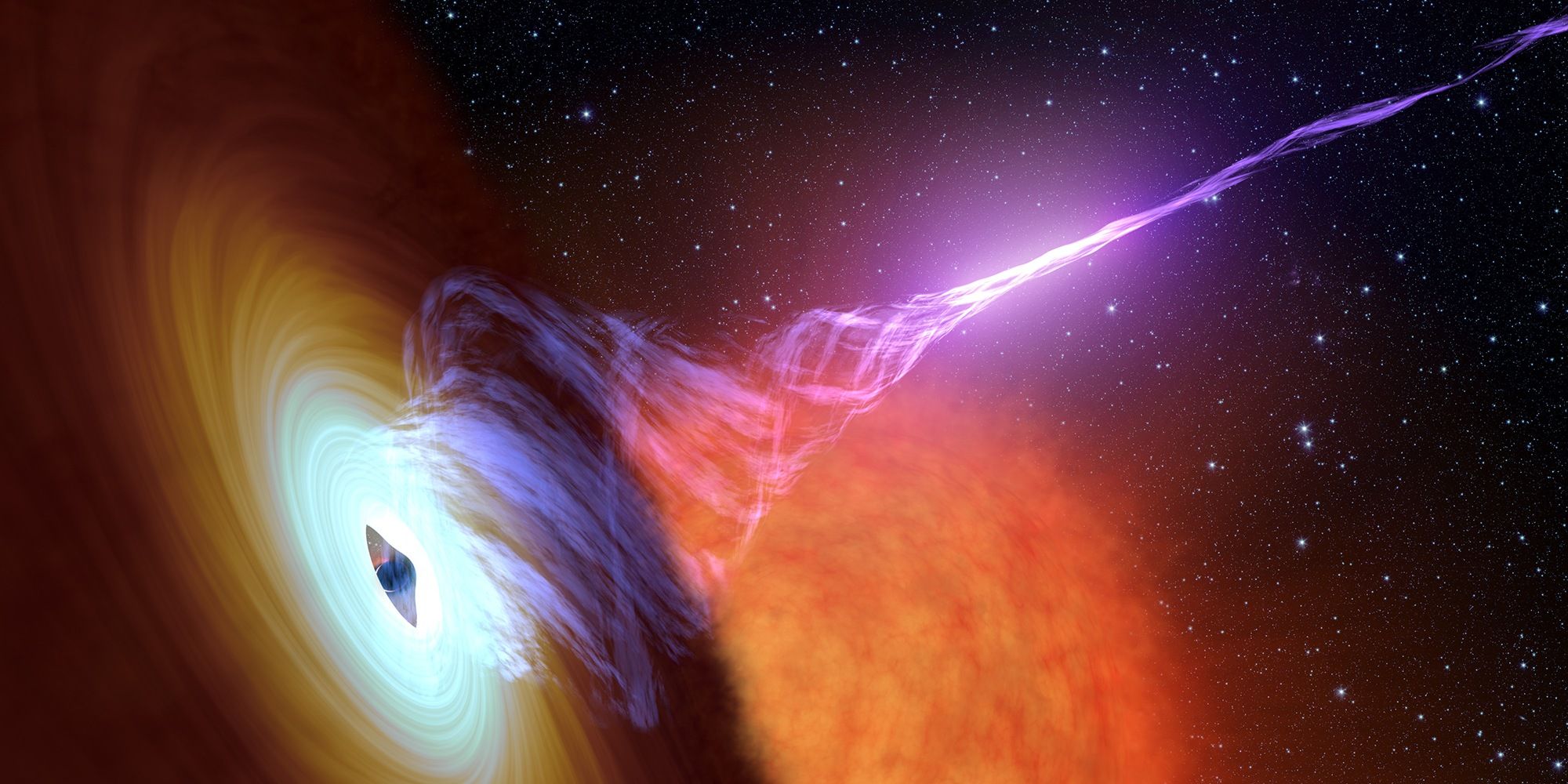A team of scientists claims to have figured out why the black hole at the center of the Messier 87 (M87) galaxy is ejecting plasma jets at near light speed in space, attributing it to the black hole’s rotation and strong magnetization accelerating the particles. Interestingly, the first-ever image of a black hole captured in 2019 depicted the one at the heart of M87 and was observed using the Event Horizon Telescope (EHT).
The supermassive black hole in question is about 6.5 billion times heavier than the Sun and sits in an elliptical galaxy that is approximately 55 million light-years away from Earth. Now, black holes are known for their often inexplicable behavior, such as their powerful gravitational pull that doesn’t even allow light to escape, the perceived warping of space-time, and their burping as they consume matter at an unprecedented pace. However, new research now sheds some light on their matter ejection behavior as well.
In a paper titled “State-Of-The-Art Energetic And Morphological Modelling Of The Launching Site Of M87 Jet,” that was published in Nature, a team of astronomers attempted to explain the reason behind a stream of energy and extremely hot matter ejecting at near light speed. The team employed sophisticated 3D modeling generated by supercomputers and applied everything from general relativity equations and electromagnetism laws to advanced fluid dynamics to study the jet stream. The model generated by them determined values such as matter density, temperature, and magnetic fields and compared them to astronomical observations. The theoretical emission model ended up matching the real-world observations of the black hole in the radio, optical, and infrared regions of the electromagnetic spectrum.
Another Black Hole Mystery Apparently Solved
Based on the computer modeling data and astronomical observations, the team proposed that the supermassive black hole at the center of the M87 galaxy rotates extremely fast. In addition, the plasma in the jet stream ejected by it is surrounded by a strong magnetic field. These two combined factors accelerate the plasma jet stream to near light speed, which is stretched across an impressive 6,000 light-years. The research mentions that the strongly magnetized region in the plasma jet is mainly responsible for the emissions that are observed in the infra-red region of the electromagnetic spectrum. Another landmark research that was recently published mentioned that aside from gobbling up matter, black holes might also exert some pressure on their surroundings.
It is worth mentioning that for objects that are too far away or shrouded by other material in such a way that they’re not visible, scientists rely on wavelengths in other regions of the electromagnetic spectrum to study them. For example, scientists recently discovered a bunch of hidden planets using radio observations. As for the plasma jet in question, it primarily consists of ionized matter that is also known as plasma state. When the speed of particles in such plasma jets achieves a rate comparable to that of light, they are classified as relativistic jets. However, supermassive black holes are not the only cosmic objects that are known to produce relativistic jets. For example, spinning neutron stars — also known as pulsars — are known to eject relativistic jets that are as fast as 80 percent the speed of light and extend thousands of light-years in space.
Sources: Nature, Goethe University Frankfurt
About The Author
